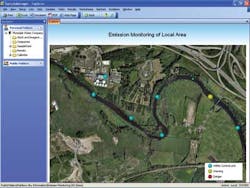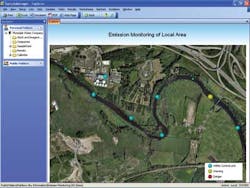Automated Data Management Helps Labs Meet Regulatory, Reporting Requirements
By Jeanne Mensingh and Colin Thurston
THE NELAC (National Environmental Accreditation Conference) standards published in 2003 were revised and made available in July 2011 as the new TNI Standard 2009. Implementation of this updated standard, which is based on ISO 17025 guidance, will become a reality in the next year. For water system operators and testing labs, implementation requires not only adherence with ISO 17025 standards but also analysis of at least five new contaminants and lower limits for existing contaminants as designated by the EPA in its annual review.
The resulting increase in sample management and data analysis workload from these new requirements necessitates an investment in automated workflow. By automating operations and integrating instruments, water operators and testing labs can increase capacity and sample throughput as well as build in regulatory compliance. At the same time, labs can reduce the costs associated with time spent on manual activities such as recording data in paper notebooks or using spreadsheets to create reports.
Implementing LIMS
Laboratory information management systems (LIMS) have been available for more than 25 years, and many water laboratories currently use one. But on the whole, much of the sample and related data management is still done using manual collection and reporting processes reliant on either paper lab notebooks or spreadsheets. While manual processes may be comfortable and part of the ‘way we do things,' they introduce a certain level of risk. For example, manual processes are error prone and the data is not searchable or collaborative in any way. In addition, manual processes are more time consuming, taking lab managers and systems operators away from more value-added work.
Moving to a LIMS can be a challenging prospect for a water testing lab but it's one that is becoming essential. With a LIMS designed to address the specific workflow and regulatory requirements of water testing labs, lab managers can make faster decisions and more rapidly share information with management or respond to ongoing regulatory and business demands. Thermo Fisher Scientific, for example, recently developed a LIMS that allows water testing labs to establish protocols and documentation methods that meet NELAC compliance requirements and ISO 17025 guidelines. With specific functionality built in to improve workflow and lab efficiency, the Water and Environmental LIMS can automate reports to ensure full traceability and preserve the integrity of the lab's data.
Any regulatory agency, such as the EPA or a state regulator, will also require reporting of lab results in a standardized and structured format. A LIMS can easily store the sample data and collate it in the appropriate format. A LIMS designed specifically for water system operators allows labs to be much more efficient by taking this data directly from the instruments and comparing it with the regulatory limits for various contaminants. Once the data is in the LIMS, lab operators can use a predefined set of reporting templates, allowing them to automate data output and spend significantly more of their time testing and processing samples. For commercial laboratory organizations, packaging and reporting results and the associated quality control data for their clients is often the deliverable product, so automating the creation and delivery of this package can also trigger the invoice process.
A LIMS designed for water and environmental labs can significantly enhance the lab's capability for any audit situation that requires evidence of controlled sample management, proper labeling and identification, records of all proficiency training for operators, instrument calibration schedules, and full audit traceability of all records. For NELAC audits, which typically occur every two years, a LIMS simplifies the audit process since it enables the lab to mine all sample-related data to give an end-to-end review of all related information. TNI Standards require audits to involve both a technical and quality system review, as well as the potential to review data over a five-year period, which can be both challenging and time consuming in a paper-based environment.
LIMS in Action: Nova Biologicals
Nova Biologicals, a NELAC-accredited lab in Texas and one of the nation's largest providers of water testing for drinking and wastewater, has implemented a Water and Environmental LIMS solution to work closely with municipalities, utilities, and federal and state authorities to meet the requirements of the Federal Safe Drinking Water Act.
Prior to implementing the Water and Environmental LIMS solution, Nova managed its work using paper-based processes and an outdated LIMS, which would not sustain Nova's growing business.
By implementing the Water and Environmental LIMS solution, Nova can centralize all data in a single database, track status and workflow throughout the lab, automate processes to eliminate error-prone redundant data entry tasks, manage documents such as SOPs and training records for audit purposes and traceability, and enable efficient data migration to and from customers.
With the new LIMS in place, Nova has been able to improve knowledge continuity as well as customer service and responsiveness. The company is also better prepared for regulatory compliance and any NELAC or other audit process. In addition, the use of paper-based systems has been significantly reduced, allowing staff to focus on value-added activities and enabling the company to eliminate manual error-prone processes and improve data quality.
About the Authors: Jeanne Mensingh is President and Founder of Labtopia Solutions, which provides tailored quality system advisory services to help meet regulatory requirements and enhance performance. Colin Thurston is Product Strategist for Process Industries in the Informatics business at Thermo Fisher Scientific. He is based in the United Kingdom.
More WaterWorld Current Issue Articles
More WaterWorld Archives Issue Articles


